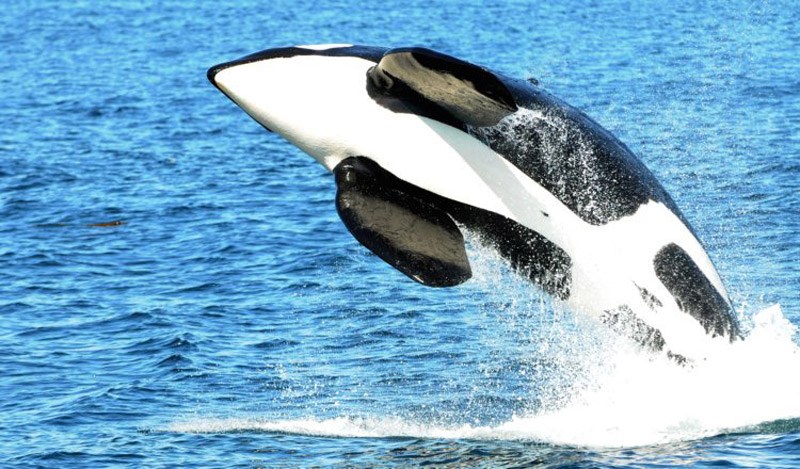Killer whales have been frequenting Sechelt Inlet recently, but some boaters have been getting too close to the endangered animals, putting themselves and the whales at risk.
Killer whales (also known as orcas) are confused by the sound of boat engines and are unpredictable, according to Tessa Danelesko, coordinator of the Vancouver Aquarium Cetaceans Sightings Network.
They can surface unexpectedly and a full-grown male orca can weigh in excess of 10,000 kg, easily overturning a boat in its wake.
Whales can also be injured by boats and propellers, and some have in the past succumbed to such injuries.
“Proper viewing is very important when it comes to conservation of these animals,” Danelesko said. “Vessel disturbance is a huge concern for all marine mammals, especially ones where eco-tourism or just general public interest is involved, which seems to be the case with killer whales.”
She said the noise made by boat engines causes problems for whale navigation.
“A huge, huge concern is noise. When we’re thinking about killer whales and other marine mammals, they’re going to be using echo-location to navigate throughout their underwater environment. It can be really dark down there, so vision isn’t always the best sense to use,” Danelesko said.
“As noise increases, it becomes increasingly difficult both to echo-locate and to communicate using sound.”
The sound of boat engines racing towards the orcas is common in the inlet, according to Michelle Burns of Mermaid Boat Tours, who has seen orcas in Sechelt Inlet off and on since June.
“People hear that they’re out there and they jump in their boats and rush out to see them. All of a sudden there will be 25 boats on the water,” Burns said.
With her tour business, she’s in Sechelt Inlet daily. She has seen power boats rush up about 30 metres behind the whales, boats speeding in front of the whales and cutting them off and even people “going full speed” straight for a pod of whales to get a closer look.
“It’s got to stress them out, and last time they were in the inlet they had three or four babies with them,” Burns said. “It really upsets me. These are amazing, majestic animals that we are lucky just to see in the wild, and we should be respecting them.”
There are some recommended ways to view the whales respectfully.
Boaters should stay at least 100 metres away from orcas and they should travel at no more than seven knots when they are within 400 metres of the animals.
“Keeping clear of the whales’ path is also really key, and you should travel parallel to them,” Danelesko said. “If the whales are travelling along the shore, you have to give them an extra wide berth.”
There are only about 300 killer whales in B.C. and about another 225 transient orcas that move between B.C. and Washington waters.
They are easily identified by their black and white markings and are generally spotted between April and November.
Find out more about whale watching guidelines at www.wildwhales.org.



